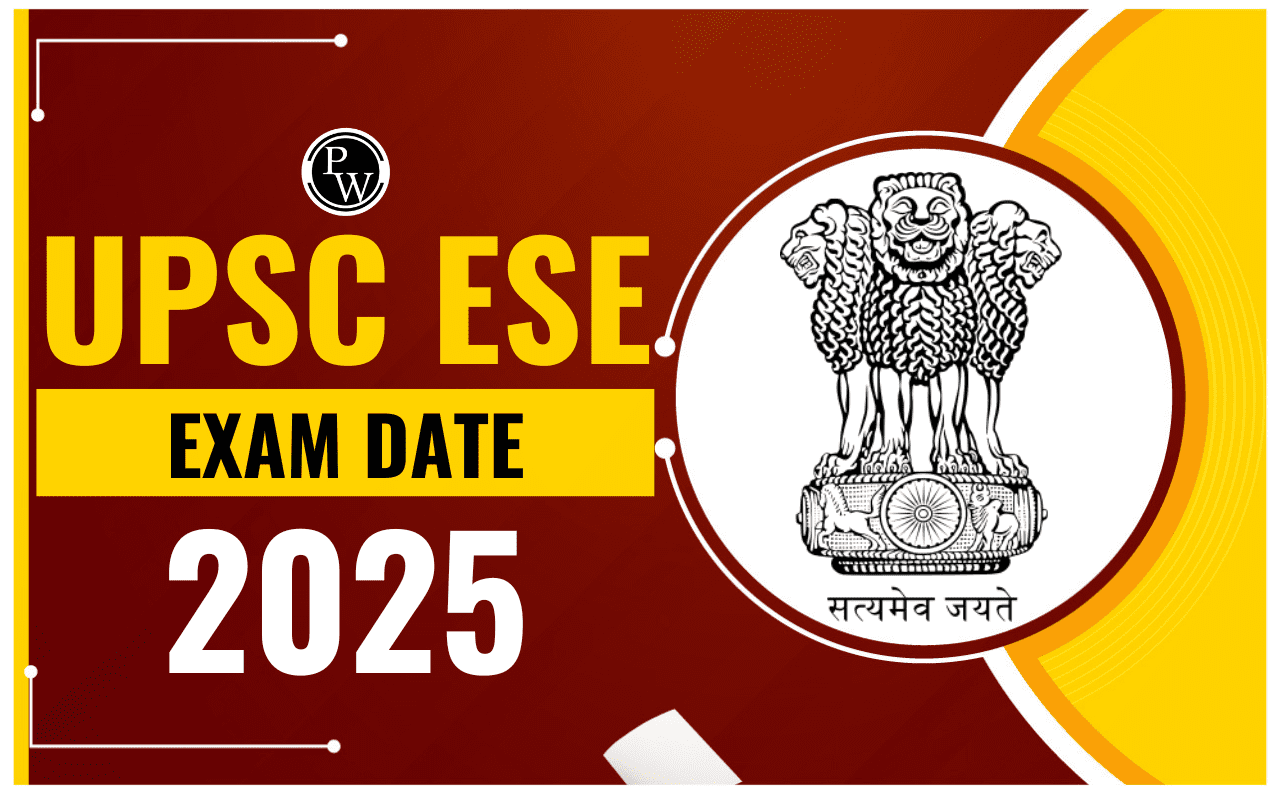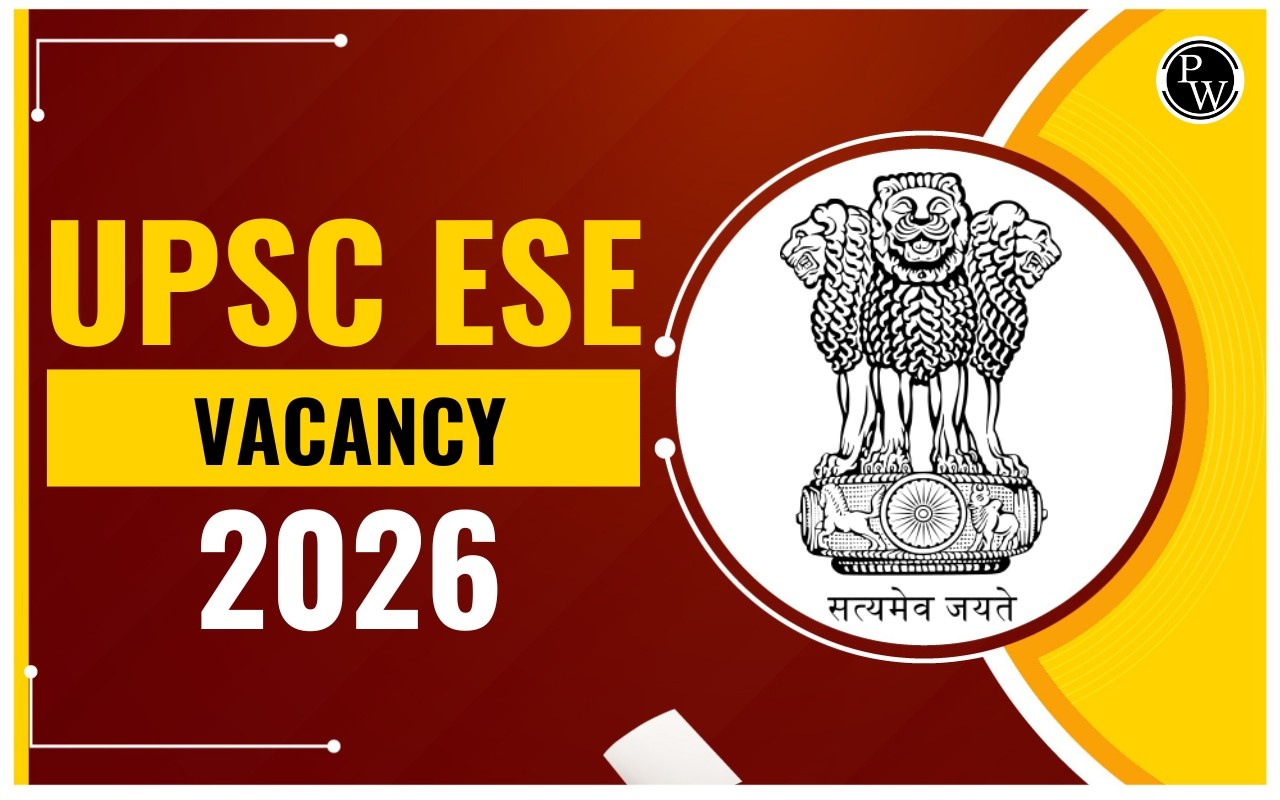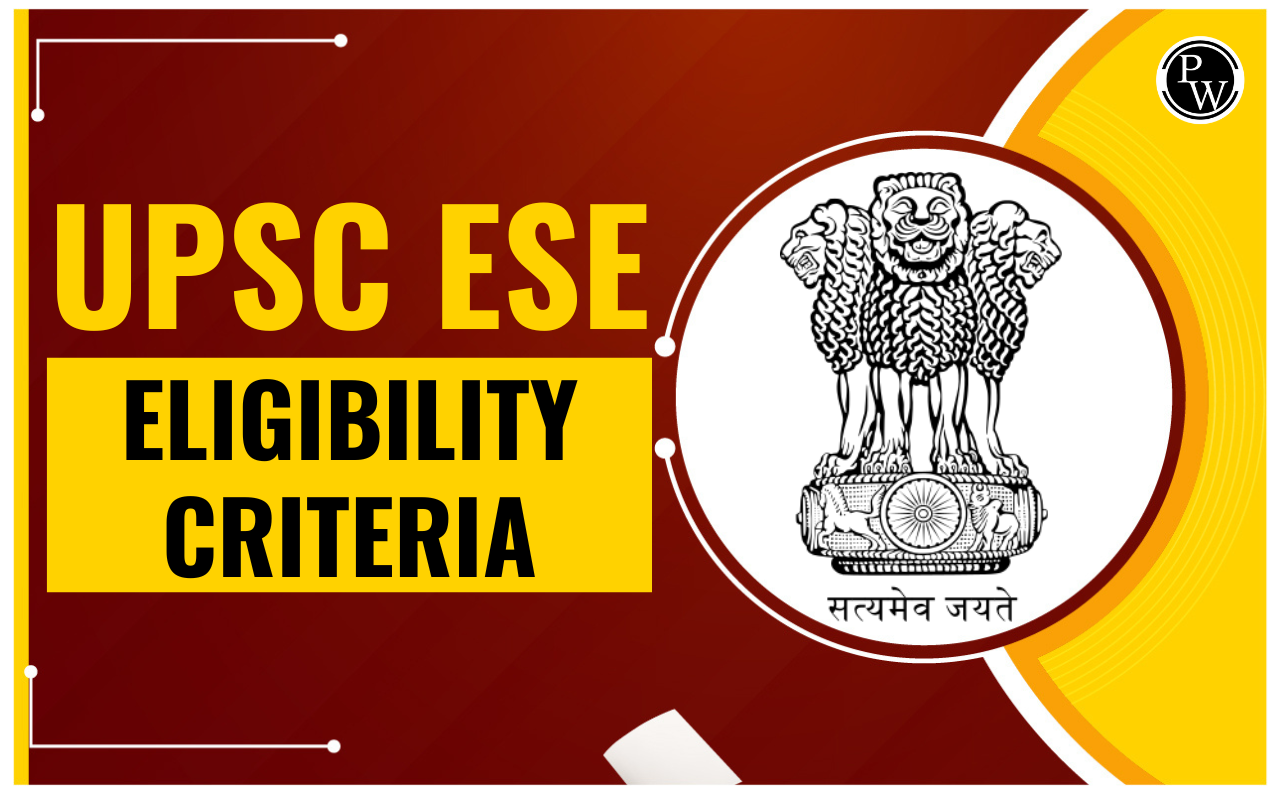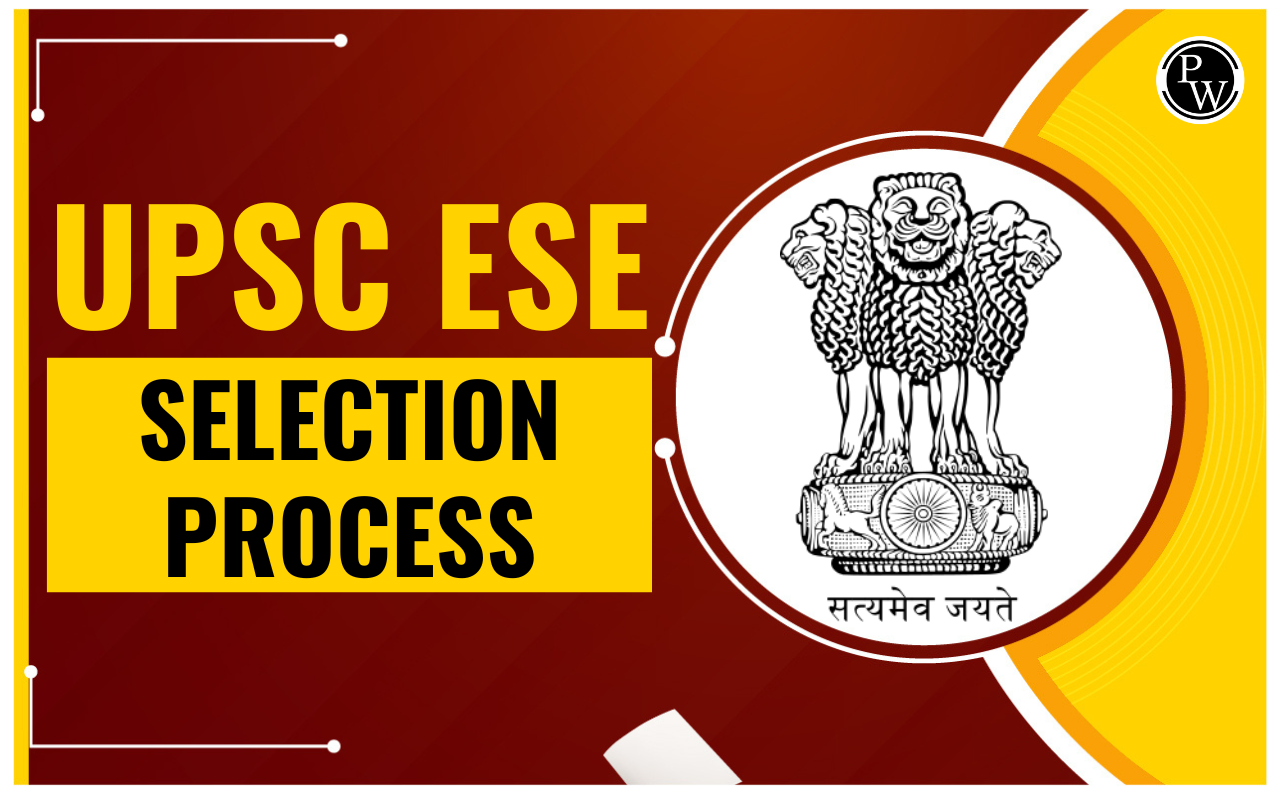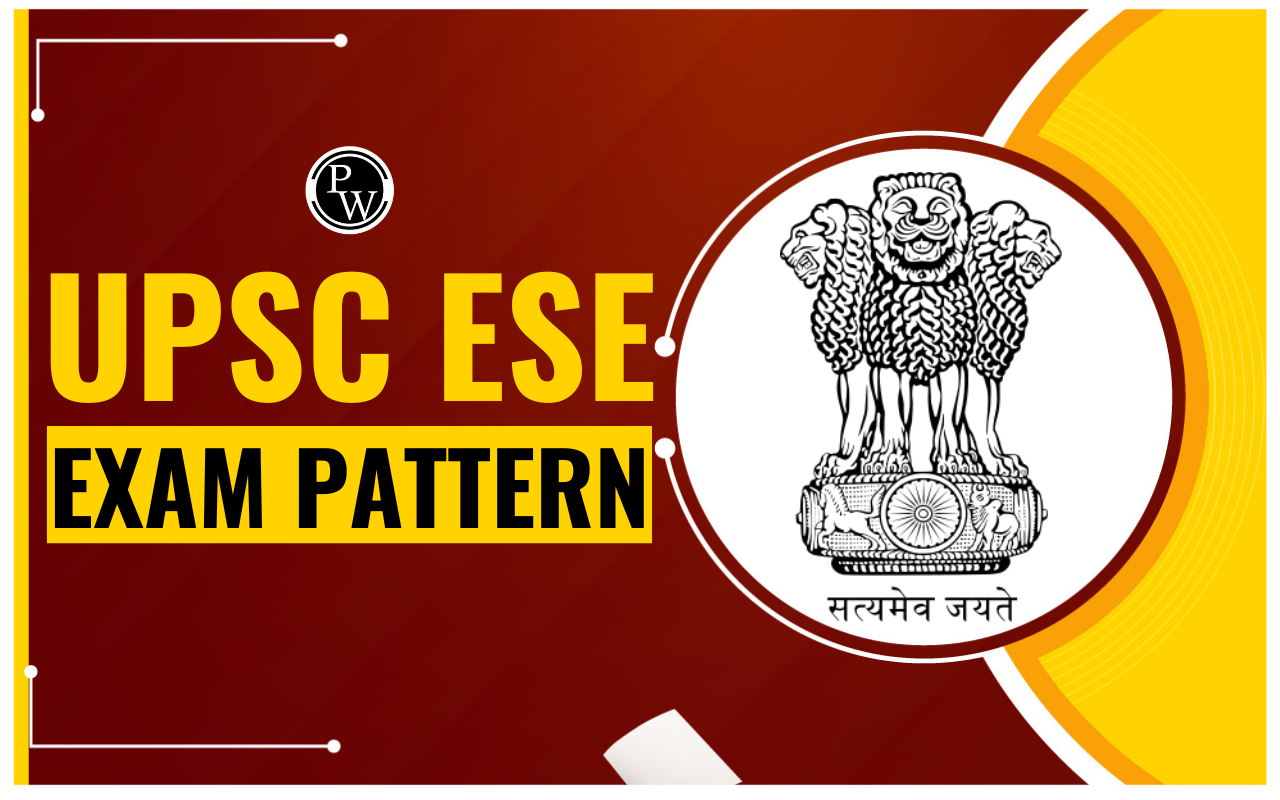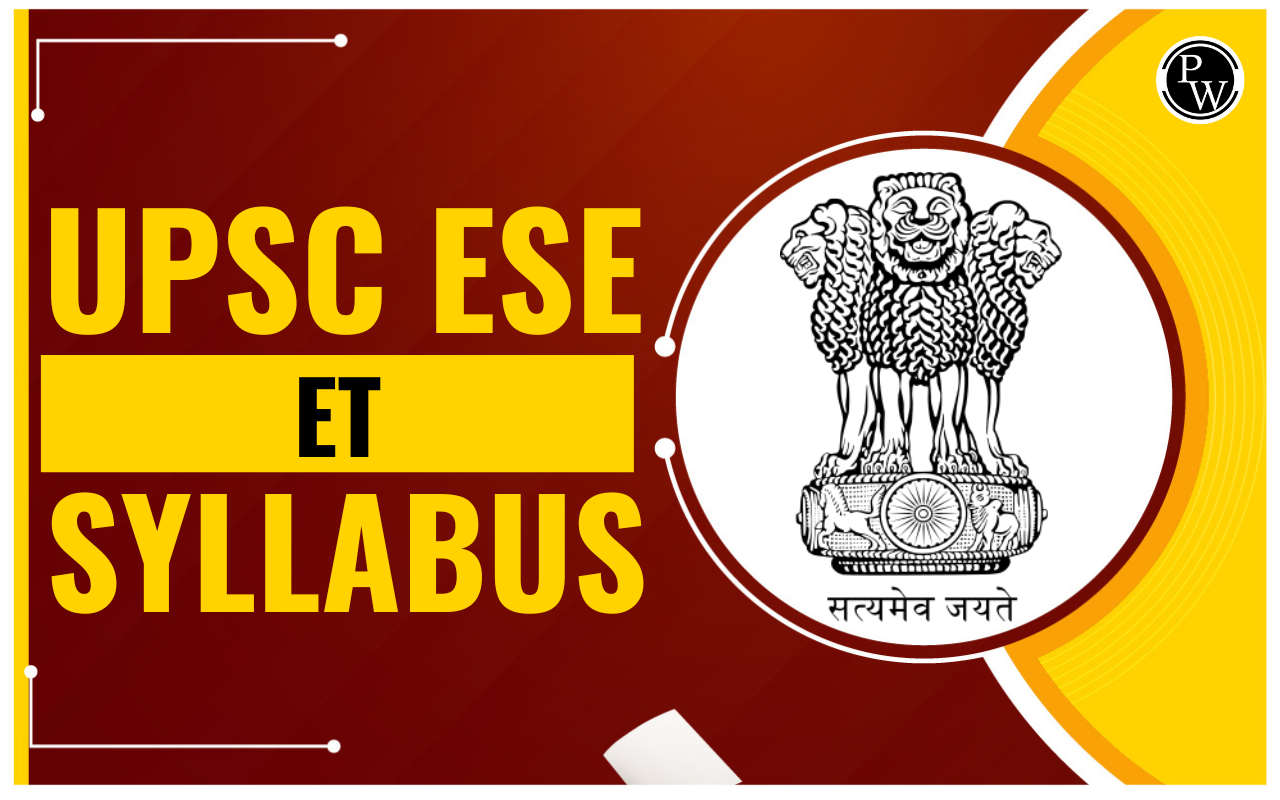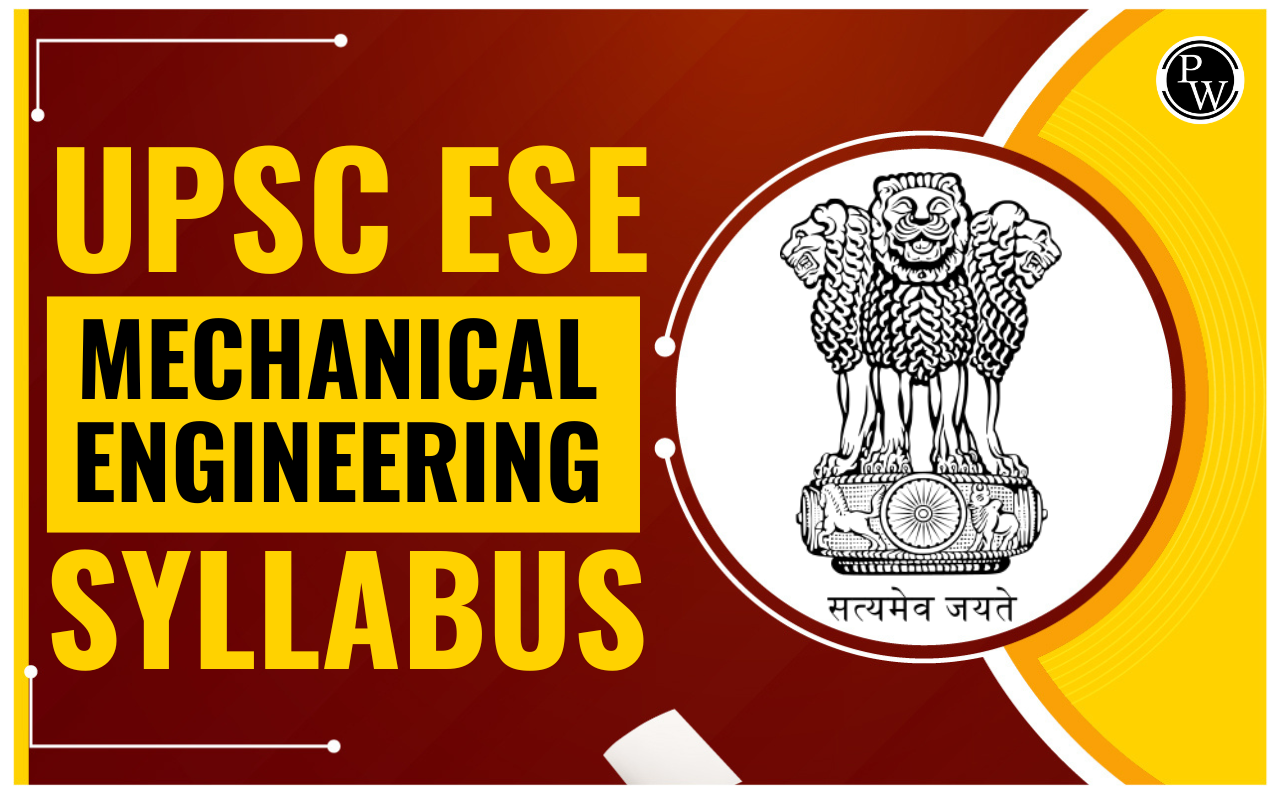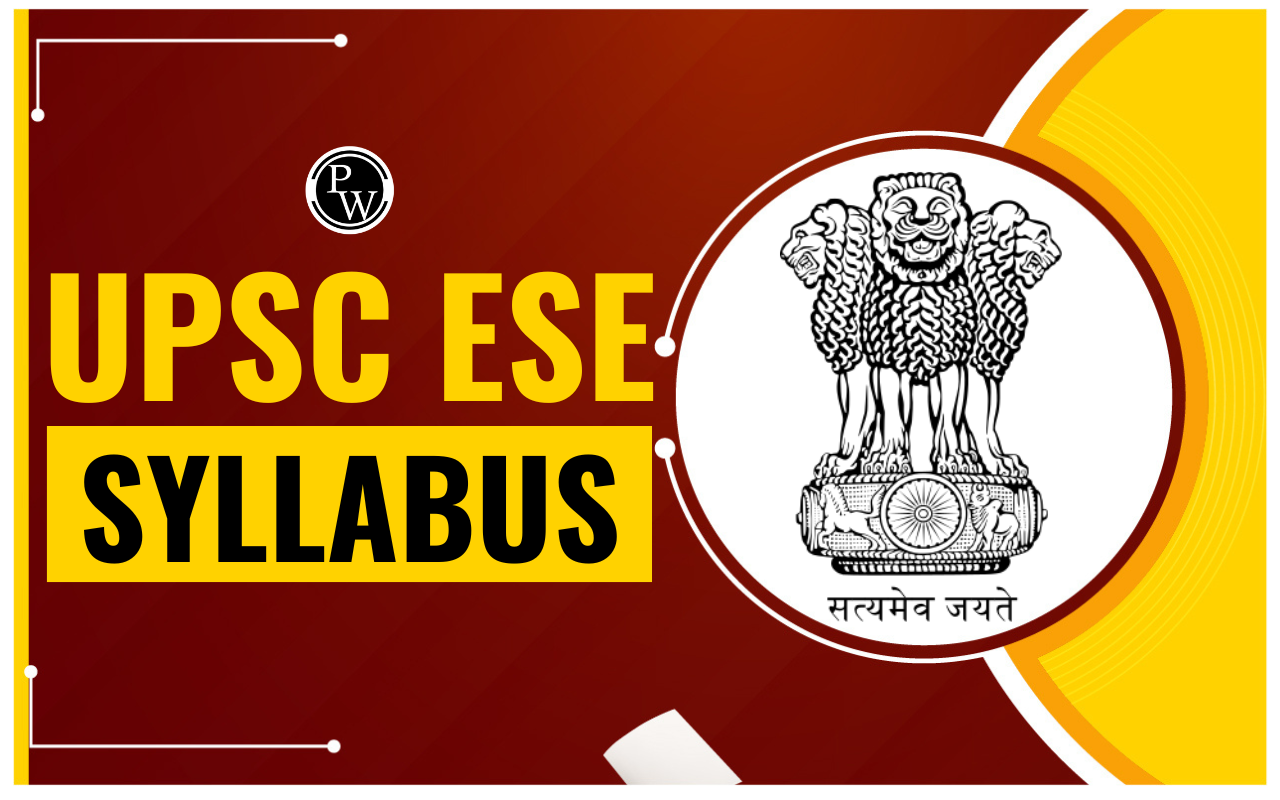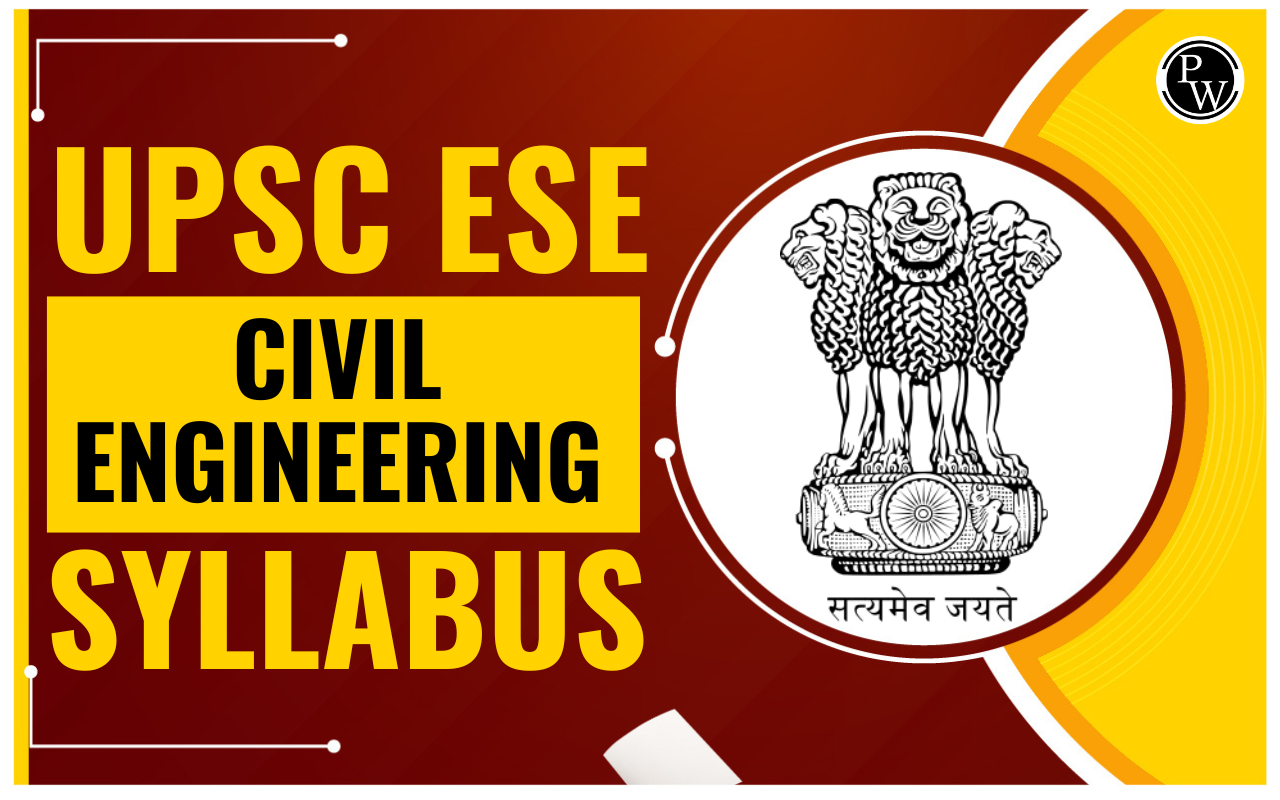
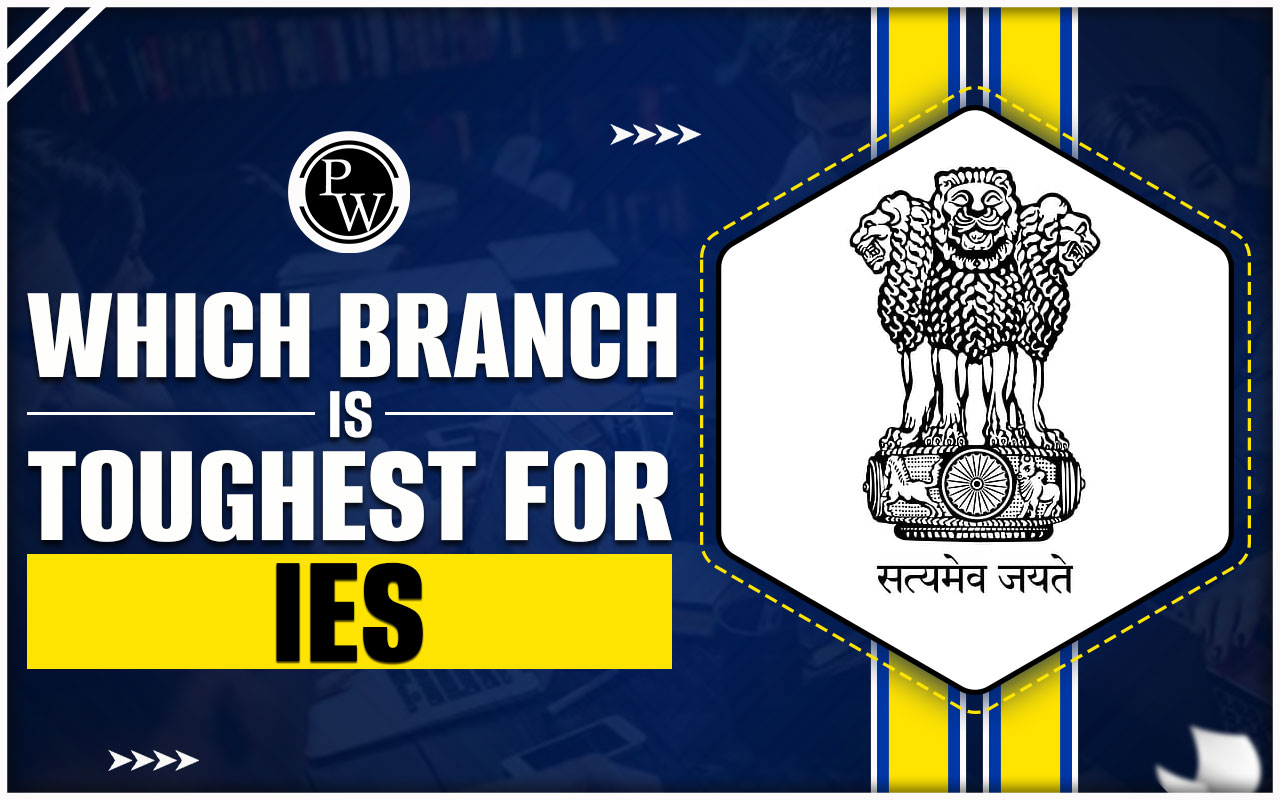
Which Branch is Toughest for IES?- The Union Public Service Commission (UPSC) administers the IES Exam, a national-level exam designed to hire engineering graduates. Every year, the commission organises the IES examination for the major fields of Civil, Mechanical, Electrical, and Electronics Telecommunications.
The UPSC IES examination is divided into two rounds (Prelims and Mains) that are held offline to shortlist applicants for the interview process. The preliminary exam is an objective paper, whilst the mains is a traditional paper. Candidates who pass the Prelims and Mains will be eligible to compete in the final round. The UPSC ESE/IES exam concludes with the interview procedure, which is the most difficult stage owing to the stringent assessment. Let us see what's significant. In this article, we have discussed “Which Branch is Toughest for IES?” to help the candidates prepare accordingly and succeed in the upcoming exam.
Which Branch is Toughest for IES?
The IES exam is often referred to as Indian Engineering Services or Engineering Services Examination (ESE).The Union Public Service Commission (UPSC) administers this examination to find qualified engineers for various government posts. The Union government chooses persons to IES posts based on the UPSC's recommendations and standards.
The IES or ESE examination is widely considered as one of the most difficult examinations in India, owing to the enormous number of applicants fighting for a restricted number of positions. Passing the IES exam is a remarkable achievement given the high level of competition.
Indian Engineering Services is regarded as the most competitive and prestigious employment for applicants appointed as engineers under the many ministries and departments of the Government of India.The appointed UPSC ESE engineers are assigned to Group A departments to conduct technical and administrative tasks for the Government of India. UPSC organises the ESE examination annually to hire engineers in four engineering specialties, namely:
- IES Civil Engineering
- IES Mechanical Engineering
- IES Electrical Engineering
- IES Electronics & Telecommunication Engineering
The selection procedure for the IES exam contains three parts, as shown below:
- Stage 1: Preliminary Examination
- Stage 2: Mains Examination
- Stage 3: Interview
IES Exam 2024 Overview
The Union Public Service Commission organises the IES, commonly known as the ESE examination, every year. Interested applicants may register for the IES exam after determining their eligibility, as indicated by the exam-conducting body.
| IES Exam 2024 Overview | |
| Particulars | Details |
| Name of the Exam | Indian Engineering Services (IES) |
| Conducting Body | Union Public Service Commission (UPSC) |
| Level of Exam | National |
| Frequency | Once a year |
| Educational qualifications | Engineering |
| Age limit | 21-30 years |
| Selection process | Preliminary, Main Exam & Interview |
| Preliminary Exam Pattern | Objective-type |
| Main Exam Pattern | Conventional |
| Total Papers in IES Exam |
|
| Total Marks |
|
| Educational Qualification | Engineering Branch |
| Nationality | Indian |
| Age Limit | 21 to 30 years |
| Number of attempts |
|
| Admit card availability | 3 weeks before the exam |
| Withdrawal of application | Yes |
| Application fee | Rs 200 |
| Official website | www.upsc.gov.in |
Which Branch is Toughest for IES? - Branch Wise Details
The Indian Engineering Services (IES), also known as the Engineering Services Examination (ESE), is made up of engineers recruited by the Indian government and designated as Class-I officers. They manage a significant component of the public sector economy, including Indian Railways, Power, Telecommunications, Central Water Engineering, and the Engineers' Service for the Defence.
Officers chosen through ESE are responsible for directing and coordinating different technical operations. Government expenditure exceeds 15% of India's GDP in a variety of economic sectors and infrastructure, including railways, roads, defence, manufacturing, inspection, supply, construction, public works, power, and telecommunications. The President of India picks candidates for these offices.
The scope of work for these bureaucrats is mostly dictated by the Engineering branch they are in and the service or cadre into which they were appointed. The career progresses smoothly, leading to great admiration. The first open post is Asst. Executive Engineer, and the hierarchy finishes with the Chairman/Managing Director role.
The following is a list of all UPSC IES jobs released for specific branches. Candidates who pass the IES examination will be assigned to the following positions based on their performance in the exam.
Also Read: UPSC ESE Exam 2024
Which Branch is Toughest for IES? - Civil Engineering
UPSC conducts the IES Civil Engineering examination at the national level for engineering and technology graduates. Candidates who will fill these vacancies in the UPSC ESE IES Civil Engineering area will be assigned to the following services/cadres:
- Indian Railway Service of Engineers.
- Indian Railway Stores Service (Civil Engineering Posts)
- Central Engineering Service
- Central Engineering Service (Roads), Group‐A (Civil Engineering Posts)
- Survey of India Group ‘A’ Service.
- AEE(Civil) in Border Road Engineering Service
- Indian Defence Service of Engineers
- AEE(QSC) in MES Surveyor Cadre
- Central Water Engineering (Group ‘A’) Service
- Indian Skill Development Service.
Also Read: IES Civil Engineering syllabus
Which Branch is Toughest for IES? - Mechanical Engineering
Because of its very competitive selection process, the IES ME test is regarded as one of the most difficult in India. Candidates who will fill these posts in the UPSC ESE IES Mechanical Engineering field will be specified to the following services/cadres
- Indian Railway Service of Mechanical Engineers
- Indian Railway Stores Service (Mechanical Engineering Posts)
- AEE in GSI Engineering Service Grade A
- Indian Defence Service of Engineers
- Indian Naval Armament Service (Mechanical Engineering Posts)
- Assistant Naval Store Grade‐I Officer (Mechanical Engineering Posts) in the Indian Navy
- AEE(Electrical Mechanical) in Border Roads Engineering Service(Mechanical Engineering Posts)
- Central Water Engineering (Group ‘A’) Service
- Central Power Engineering Grade A Service (Mechanical Engineering Posts)
- Indian Skill Development Service
- Central Power Engineering Grade B Service (Mechanical Engineering Posts)
Also Read: IES Mechanical Engineering syllabus
Which Branch is Toughest for IES? - Electrical Engineering
Electrical Engineering is regarded as the toughest branch for IES Exam.Candidates who are recruited into the UPSC ESE IES Electrical Engineering services will be assigned to the following Group A/B technical functions of the Government of India in the area of engineering based on their IES EE exam scores.
- Indian Railway Service of Electrical Engineers
- Indian Railway Stores Service (Electrical Engineering Posts)
- Central Mechanical and Electrical Engineering Service (Electrical Engineering Posts)
- Indian Defence Service of Engineers
- Assistant Naval Store Grade‐I Officer (Electrical Engineering Posts)
- Central Power Engineering Grade A Service(Electrical Engineering Posts)
- Defence Aeronautical Quality Assurance Service/SSO‐II (Electrical)
- Indian Skill Development Service
- Central Power Engineering Grade B Service (Electrical Engineering Posts)
Also Suggested: IES Electrical Engineering syllabus
Which Branch is Toughest for IES? - Electronics and Telecommunication Engineering
The Union Public Service Commission (UPSC) will hold a national level exam to hire Electronics and Telecommunication Engineers. Candidates can fill these positions in the UPSC IES Electronics and Telecommunication Engineering field will be allowed to the following services/cadres-
- Indian Railway Service of Signal Engineers
- Indian Railway Stores Service (Telecommunication/Electronics Engineering Posts)
- Grade A Indian Radio Regulatory Service
- Indian Telecommunication Service Grade A.
- Indian Naval Armament Service (Telecom and Electronics Engineering Posts)
- Asstt. Naval Store Officer Grade‐I (Electronics and Telecom Engg. Posts) in the Indian Navy.
- Central Power Engineering Service Grade A (Electronics Telecom Engineering Posts).
- Indian Skill Development Service
- Junior Telecom Officer Grade B
- Central Power Engineering Service Grade B (Electronics Telecom Engineering Posts)
Also Suggested: IES Electronics and Telecommunication Engineering syllabus
Roles and Responsibility of IES Officer
- After being chosen, the IES is assigned to the position of Assistant Executive Engineer or Assistant Director.
- They are promoted to executive engineer, director, or work manager after 3 to 4 years of experience in this field. After 8 years of service, they advance to deputy general managers or joint directors.
- With more than 13 years of experience, they are eligible for promotion to joint general manager or level 2 chief engineer.
- After 20 years of service, an IES may move to the post of chief engineer or additional general manager.
- After 30 years of service with the Indian government, they can be promoted to senior general manager or engineer-in-chief.
- The best performance of an IES officer with 34 years of service qualifies them to become chairman or managing director of a government agency.
We hope you found our post on “Which Branch is Toughest for IES?” to be useful and informative. The mains exam is quickly approaching, and students should take advantage of every chance to strengthen their preparations. The Physics Wallah app is where you can get all of the competitive exam syllabus PDFs, sample exams, online lectures, and much more.
Which Branch is Toughest for IES?
Which Branch is Toughest for IES?
Who is eligible to participate in the IES branch?
Is the IES exam difficult for civil engineers?
Is it tough to pass the IES exam?




